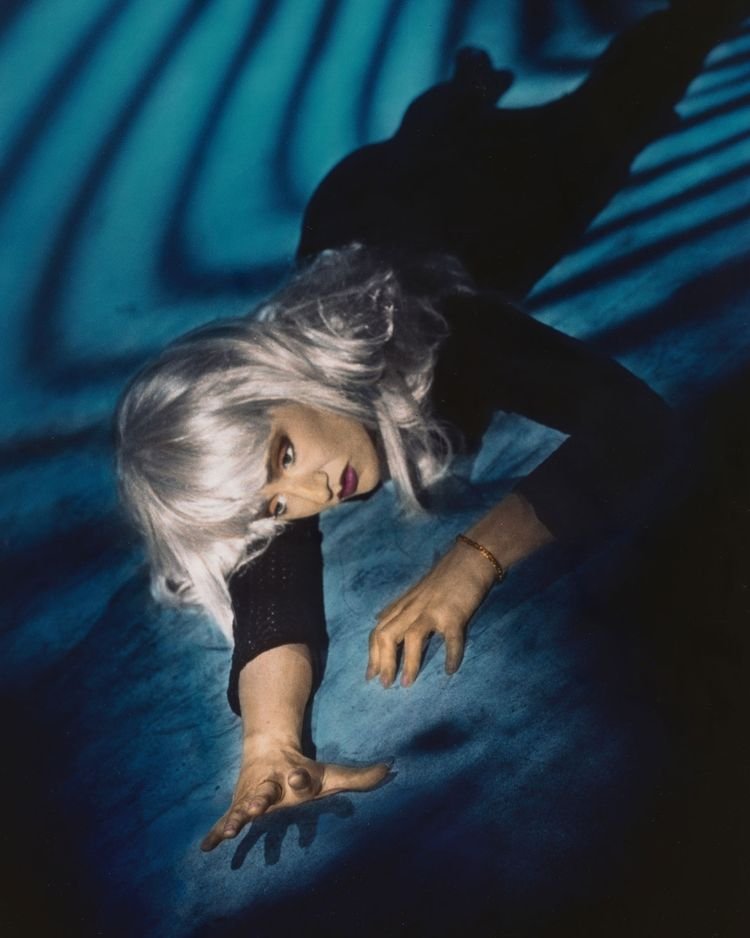Know My Name, National Gallery of Australia | Robyn Stacey
Know My Name is an initiative of the National Gallery to increase the representation and participation of artists who identify as women across its collections and programs. Through this initiative, the Gallery aims to enhance the understanding and appreciation of work by Australian women artists.
Excerpted from the Know My Name publication (2020).
In the series Redline 7000, I was concerned with the portrayal of women and the role of the spectator as a co‑conspirator in the creation of the myth around these women.(1)
In her photograph Ice, from the 1989 series Redline 7000, Robyn Stacey presents an enigmatic leading lady of the same name. Like a close‑up of a screen idol, Ice’s head floats amid a night‑time cityscape of illuminated high‑rise buildings and blinding searchlights. Her pale skin seems floodlit and her velvety red lips add to the cinematic intensity. As cool as ice, her vacant expression gives away little else than self‑assurance. And yet it is impossible not to speculate—has she just moved to the city? Does she meet the gaze of a lover? Will she get her big break?
The title of the series derives from a 1965 American action sports film Red Line 7000, referencing the red line on a car’s tachometer to indicate the danger zone. For the series, Stacey uses thelanguage of cinema and advertising to create billboard‑like images saturated with nostalgia and anticipation. Ice is bold and slick, owing to Stacey’s love of B‑grade Hollywood cinematography and the glossy finish of the (now antiquated) Cibachrome photographic printing process. This photograph looks back to the sexuality and power of the heroines of postwar American crime dramas as well as forward, pre‑dating TV series Sex and the City by a decade. Her interest lies in her screen sirens, and the inevitable narratives that entangle them with each new reading.
Stacey’s approach to photography is more akin to a painter or a printmaker, building up the image like layering oil paint or manipulating marks on an etching plate. The models for works in the series were friends of the artist, and first shot on black‑and‑white film. The montaged images were then printed on matte paper and hand‑coloured, then re‑photographed onto a transparency and printed as a glossy Cibachrome. Stacey’s hand‑colouring reflects an intimate connection with the labour of constructing the image—hand‑colouring photographs has been women’s work since the birth of photography in the early nineteenth century.
Stacey works in series, often exploring a concept over a number of years. To each new project she brings careful investigation by accumulating specialist knowledge. Her compositions are highly constructed, and informed by
history, science, literature and screen culture. She gives equal weight and care to each subject—whether an entomological specimen, a still life of colonial glassware, or an architectural view constructed by a camera obscura. Stacey’s recent Nothing to see here 2019 is a series of photographs of curtains overlaid with coloured light filters or grainy faces cut from vintage Super 8 footage. Three decades on from Redline 7000, Stacey manipulates the still photographic image into a hum of suspense, as the works mark a threshold between audience and unknown performance.

